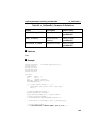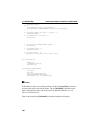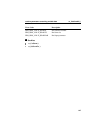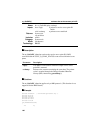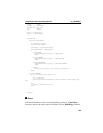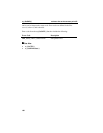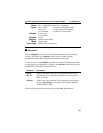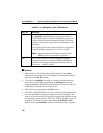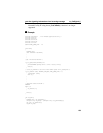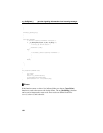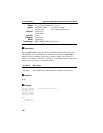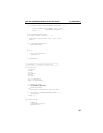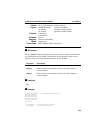
cc_GetSigInfo( ) gets the signaling information of an incoming message
152
Table 23. cc_GetSigInfo( ) Info_ID Definitions
Info_ID Definition
U_IES Information elements (IEs) in CCITT format. The
cc_GetSigInfo( ) function retrieves all unprocessed IEs in
CCITT format. Be sure to allocate enough memory (up to 256
bytes) to hold the retrieved information elements. The IEs are
returned as raw data and must be parsed and interpreted by the
application.
Use IE_BLK to retrieve the unprocessed IEs. For a description
of the IE_BLK data structure, see Section 6.6. IE_BLK.
NOTE:
Information Elements (IEs) that are specific to the
DPNSS protocol are described in Appendix C.
UUI User-to-user information - the data returned is application-
dependent and is retrieved using the USRINFO_ELEM data
structure. For a description of the return format for UUI, see
Section 6.16. USRINFO_ELEM.
!
! !
!
Cautions
• Make sure the size of the information buffer pointed to by the valuep
parameter is large enough to hold the complete set of information elements
requested by the info_id parameter.
• To use the cc_GetSigInfo( ) function for a channel, the application must
specify the size of the queue by calling the cc_SetParm( ) function and
setting the RECEIVE_INFO_BUF to the desired size. Failure to set the size
of RECEIVE_INFO_BUF will result in an error.
• This function is not supported for the BRI/2 board.
• The CCEV_NOFACILITYBUF event will be received by the application for
every incoming ISDN message that contains the Network Facility IE. The
event is received because the first four IEs are stored in the ISDN library and
the remaining ones are discarded. The CCEV_NOFACILITYBUF event can
be ignored. The IE can be retrieved using the cc_GetCallInfo(U_IES)
function or the cc_GetInfoElem( ) function. The ability to retrieve just the




